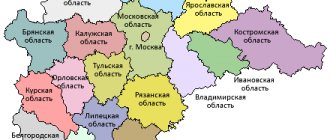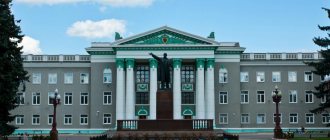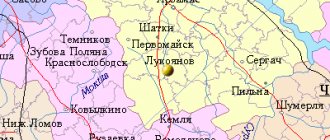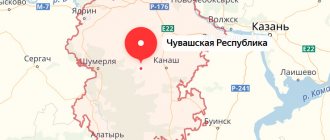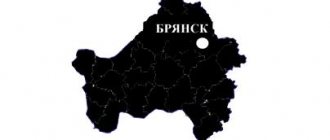The Siberian Federal District (SFO) is an administrative formation in Russia, formed on May 13, 2000 by decree of the President of the Russian Federation. Its population is 19.25 million (2010 census). Finding the Siberian Federal District on the map is not difficult, because it occupies 30 percent of the territory of our country. Up to 85 percent of all-Russian reserves of platinum and lead, 80% of molybdenum and coal, 71% of nickel, 69% of copper, 44% of silver, 40% of gold are concentrated here. In the total volume of industrial production, the share of the Siberian Federal District in 2013 was 11.2 percent.
Siberian Federal District: composition
The formation includes twelve subjects of the federation, including five regions (Omsk, Novosibirsk, Irkutsk, Tomsk, Kemerovo), four republics (Khakassia, Buryatia, Altai, Tyva) and three territories (Trans-Baikal, Altai, Krasnoyarsk). The capital of the Siberian Federal District (administrative center) is the city of Novosibirsk. In total, there are 4,114 municipalities in the Siberian Federal District, of which 319 are municipal districts, 257 urban settlements, 77 urban districts, and 3,461 rural settlements. Settlements with a population of more than one hundred thousand people are Novosibirsk, Krasnoyarsk, Irkutsk, Novokuznetsk, Omsk, Tomsk, Kemerovo, Bratsk, Barnaul, Seversk, Ulan-Ude, Biysk, Norilsk, Angarsk, Berdsk, Kyzyl, Prokopyevsk, Chita, Rubtsovsk, Achinsk, Abakan.
Civil War
It was Novosibirsk, in 1917 Novo-Nikolaevsk, that was destined to become the city where the Civil War began, since historians consider it to be the beginning of the uprising of the Czechoslovak Legion. A Czech unit located in the city, together with the officer underground, overthrows Soviet power in the city. At the same time, the Siberian Autonomous Region was formed in Tomsk and a provisional Siberian government was formed. But already in November 1919, units of the Fifth Red Army liberated the Siberian regions, in which Soviet power was established.
Territory
The Siberian Federal District has a total area of 5114.8 thousand square kilometers, the length of the territory from west to east is 3420 kilometers, from north to south - 3566 kilometers. In the west, the Siberian Federal District borders on the Yamalo-Nenets and Khanty-Mansi Autonomous Okrugs, the Tyumen Region; in the north - only with the Yamalo-Nenets Autonomous Okrug; in the south - with Mongolia, Kazakhstan and China; in the east - with the Amur region and the Republic of Yakutia (Sakha). The length of the state border is 7269.6 kilometers, including with Kazakhstan - 2697.9 kilometers, with China - 1255.5 kilometers, with Mongolia - 3316.2 kilometers. The Siberian Federal District includes 108 border outposts, 68 customs posts and border checkpoints.
Geography of the city of Omsk
Omsk is located in the southern part of the West Siberian Plain, in the forest-steppe zone. It was built on a river valley, in the place where the Om River flows into the Irtysh River. The terrain is flat, with isolated hollows and ridges. Heights range from 69 to 124 meters. The time zone of Omsk is designated as MSK+3.
The climate of Omsk is continental and corresponds to the conditions of the Siberian forest-steppes. Winters are cold, the average temperature in January is minus 19 °C, and the minimum is minus 45 °C. In summer there are large temperature changes: the weather can be very hot or cold. This is due to the area’s openness to winds from the Arctic and Central Asia and high continentality.
The annual precipitation is 415 mm. The weather is generally quite dry and sunny. Dust storms also occur.
Natural vegetation in the city and its environs has hardly survived. Crop areas and areas of secondary birch-aspen forests predominate.
Population
The share of the total population of Russia is 13.48 percent. Density: 3.7 people per square kilometer. This formation is characterized by a significant preponderance of the urban population over the rural: 72 percent versus 28. Residents of the Siberian Federal District are predominantly Russian (87.38 percent). The population of the Siberian Federal District is also represented by Buryats (2.13%), Ukrainians (1.86%), Germans (1.54%), Tatars (1.26%), and Tuvans (1.2%). Less than one percent of the total population are Kazakhs, Khakassians, Belarusians and Altaians.
Ecological situation
Until 2011, Omsk was considered one of the most polluted cities in the country. However, in recent years the environmental situation has improved. The reason for the improvement was the modernization and slowdown of city enterprises. However, the problem of transport pollution persists. The problem of landfills, which affect river pollution, also remains relevant. The waters of large rivers remain in an unsatisfactory ecological condition.
Economy
The leading sector of formation is industry; in 2012 it accounted for 37.2 percent of gross value added (in the Russian Federation on average - 32.3 percent). The gross regional product in 2012 amounted to 5147.4 billion rubles (10.3 percent). GRP per capita – 267.1 thousand rubles (in the Russian Federation – 348.6 thousand rubles). In the total volume of shipped industrial products in Russia, the share of the Siberian Federal District in 2013 was 11.2 percent. Products produced per capita amounted to 234.4 thousand rubles (in the Russian Federation - 280 thousand rubles). In the total volume of Russian agricultural production, the share of formation in 2013 was 13.6 percent. Agricultural products worth 515.3 billion rubles were produced, per capita – 71.5 thousand rubles (in the Russian Federation – 92.5 thousand rubles). With all this, the volume of foreign investment in the Siberian Federal District is insignificant - only 412 US dollars per capita, while in the Russian Federation - 1187 US dollars. Foreign trade turnover, according to customs statistics, in 2013 amounted to 45.5 billion US dollars, of which 36.2 billion were exports and 9.2 billion were imports.
Economy and industry
Omsk is an industrial center, one of the largest in the country. It is in 5th place on this list. The city's enterprises specialize in petrochemistry, chemistry, oil refining and strategic engineering. There are many food and light industry enterprises.
There are 27 hotels and 8 hostels in the city. The prevailing trend is towards the construction of small hotels and hostels. The most prestigious is the Berezovaya 2 hotel, popularly referred to as the state dacha on Berezovaya. In terms of quality of services, it corresponds to a five-star level. Another 3 have official three-star status. The status of the rest is even lower. Many hotel construction projects were never implemented.
The science
On its territory, the Siberian Federal District has branches of three Russian academies of sciences: SB RAS, SB RAMS and SB RAAS. They include more than a hundred research organizations and a network of research and experimental stations. In the Siberian Federal District there are 7,767 daytime educational institutions (not taking into account evening ones), of which 411 are primary education, 410 are secondary education (of which 33 are non-state), 116 are higher education (not taking into account branches, of which 33 have the status of non-state). The largest number of higher educational institutions are concentrated in the Novosibirsk region (26), as well as in the Omsk (19) and Irkutsk (15) regions. For ten thousand inhabitants, the number of students and students in primary education institutions is 81 people (in the Russian Federation - 64 people), in secondary education institutions - 159 people (in the Russian Federation - 138 people), in higher education institutions - 429 people ( in the Russian Federation – 454 people).
City development
In 1926, the city was renamed and received its modern name Novosibirsk. It developed rapidly, which allowed A. Lunacharsky, who visited it in the late 20s, to call it “Russian Chicago.” During the Second World War it became a large industrial city. In addition to their enterprises, such as the aviation industry, enterprises from the central part of the USSR were evacuated here.
In 1937, the Altai Territory, Novokuznetsk and Tomsk regions were removed from the West Siberian Territory. Since 1943, the Novosibirsk region was formed with the regional center of Novosibirsk. In 1957, the Siberian Branch of the USSR Academy of Sciences was created. Academy Town was built on the outskirts of the city. The city becomes the largest scientific center not only in Siberia, but also in the country.
(adsbygoogle = window.adsbygoogle || []).push({});
Healthcare
According to data for 2012, in the Siberian Federal District there are 197.6 thousand hospital beds, which is 102.6 beds per ten thousand residents (in the Russian Federation - 94.2 units); doctors of all specialties - 102.2 thousand people, based on ten thousand inhabitants - 53.1 doctors (in the Russian Federation - 51.2 specialists); paramedical personnel - 222.1 thousand people, based on ten thousand inhabitants - 115.3 people (in the Russian Federation - 107 people).
Administrative center of the Siberian Territory
In 1920, the Bolsheviks, remembering the dominant role of Tomsk in the white movement, moved the administrative center to Novo-Nikolaevsk. But the uprising in the South-West of the Tomsk province, the siege of Novo-Nikolaevsk, its harsh suppression, and the evacuation of all administrative and party institutions to Tomsk forced the Soviet government to temporarily abandon this step.
After the civil war, the entire country lay in ruins. The inhabitants of Novo-Nikolaevsk were just over 20 thousand people. The railway did not work. The most important task was to restore the functionality of the huge transport hub. Therefore, the Bolshevik government decides to establish the Novo-Nikolaevsk province on part of the territories of the Omsk and Tomsk provinces.
var blockSettings12 = {blockId:"RA-116722-12",renderTo:"yandex_rtb_R-A-116722-12",horizontalAlign:!1,async:!0}; if(document.cookie.indexOf(“abmatch=”) >= 0){ blockSettings12 = {blockId:”RA-116722-12″,renderTo:”yandex_rtb_R-A-116722-12″,horizontalAlign:!1,statId: 7,async:!0}; } !function(a,b,c,d,e){a[c]=a[c]||[],a[c].push(function(){Ya.Context.AdvManager.render(blockSettings12) }),e=b.getElementsByTagName(“script”)[0],d=b.createElement(“script”),d.type=”text/javascript”,d.src=”//an.yandex.ru /system/context.js",d.async=!0,e.parentNode.insertBefore(d,e)}(this,this.document,"yandexContextAsyncCallbacks");
On May 25, 1925, the administrative unit of the Siberian Territory was formed, headed by the city of Novo-Nikolaevsk. This became the prototype of the status of modern Novosibirsk - the federal district, which it has had since 2000. It included the provinces: Novo-Nikolayevskaya, Tomskaya, Altaiskaya, Omskaya, Yeniseiskaya, in addition, the autonomous region - Oirotskaya, which was later included in the Altai Territory.
Culture and sports
The number of theater spectators in the formation is 254 people per thousand population. According to this indicator, the Siberian Federal District ranks third among the federal districts of Russia. Museums are visited by 373 people per thousand inhabitants (fifth place in the Russian Federation). The library stock of accessible institutions totals 5,883 copies per thousand population (also fifth place), and the one-time circulation of newspapers per thousand population is 772 copies (sixth place). The administrative formation has 34,508 sports institutions, of which 326 stadiums with stands for one and a half thousand or more seats, 21,039 flat sports facilities (fields and playgrounds), 12,575 gyms, 568 swimming pools. In addition, in the Siberian Federal District there are 8,324 health institutions for children.
Transport of Omsk
There are various types of public transport in the city. River transport has a long history and is represented by a river station and a cargo river port.
There are 2 railway stations in the city: “Omsk-Passenger” and “Omsk-Prigorodny”. There is a station square in front of them. Economically important is the passage of the Trans-Siberian Railway through Omsk.
Aviation transport is represented by Omsk-Central Airport. There is also a rather ancient Omsk-Severny airfield, which was previously used for civilian transport.
City transport is represented by all types: buses, trams, trolleybuses and minibuses. The number of bus routes is several times greater than trolleybus and tram routes.
Also, the federal highway “Irtysh” with code number P254 passes through the city.
Additional Information
Since May 12, 2014, the representative of the President of the Russian Federation in the Siberian Federal District has been Nikolay Evgenievich Rogozhkin. Before him, this position was held by Viktor Aleksandrovich Tolokonsky (since September 2010). Even earlier, the plenipotentiaries were Anatoly Vasilyevich Kvashnin (2004-2010), Leonid Vadimovich Drachevsky (2000-2004). The responsibilities of the authorized representative of the Siberian Federal District include organizing work on the implementation by authorities within the district of the main directions of foreign and domestic state policy; to monitor the implementation of government decisions; to ensure the implementation of the personnel policy of the Russian President.
Do you want to know any more information about the Siberian Federal District? The official website will help you with this. His address: sibfo.ru.
Holidays in Omsk
As in many other Russian cities, recently the number of places available for recreation has been steadily declining. This is due to the compaction of buildings and the cutting down of trees. Despite the existing ban on swimming in rivers, there are several beaches in the city. From the point of view of nature, the Bird Harbor Park is of greatest interest, where natural reservoirs and wetland vegetation with wildlife have been preserved.
Thus, the answer to the question of which federal district and region of Russia is Omsk was given at the beginning of the article.
Source
